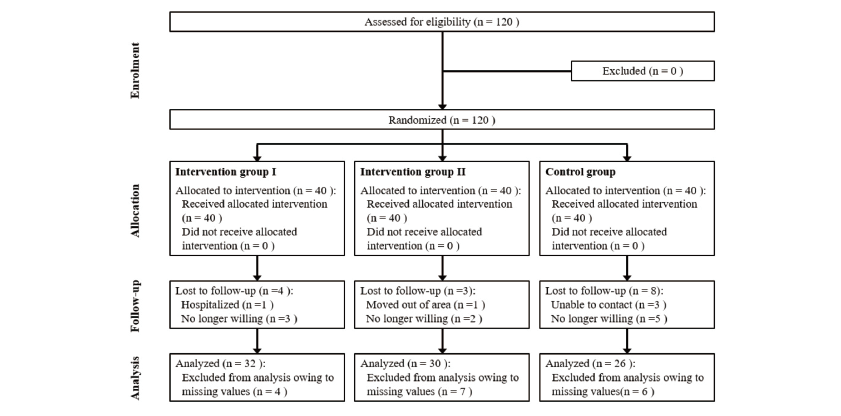Abstract
Objectives: To evaluate the impact of an oral exercise program including whole-body exercises on oral function in older people. Methods: The participants (aged ≥65 years) were divided into three groups: intervention group I (only oral exercise), intervention group Ⅱ (oral exercise with whole-body exercises), and control group (no intervention). The oral health status, saliva flow rate, and oral muscle strength were evaluated. Analyses were performed to compare the three groups and identify the changes in the aforementioned parameters before and after the program. Results: The saliva flow rate significantly increased in intervention groups Ⅰand Ⅱ after the program. Oral muscle strength evaluation using the Iow a oral performance instrument showed that the anterior tongue strength increased significantly in intervention group I; the posterior tongue strength and cheek strength also increased but not significantly. The anterior tongue, posterior tongue, and cheek strengths significantly increased in intervention group Ⅱ. Conclusions: The oral exercise program including whole-body exercises showed positive effects on the saliva flow rate and oral strength. No significant differences were observed in the quality of life related to oral health.
Figures & Tables

Fig. 1.Consolidated standards of reporting trials(CONSORT) flow diagram


